
Light plumes of steam gently billow from the oval silver tray the waiter presents to our table, accompanied by a salty aroma. Compared with the enthusiasm that greeted our previous dishes – cockles drenched in buttery olive oil mopped up with bread, and mussels in orangey pernod sauce – its contents are now being met with slightly quizzical looks.
We wait with bated breath for someone else to dig in first. And it’s not because we’re being polite. It’s because the plate of percebes – goose barnacles – has us well and truly stumped. To the uninitiated (as I was mere minutes before), they’re filter-feeding crustaceans harvested from rocks. From a quick glance, they appear totally prehistoric, with triangular silvery-grey shells at one end and cylindrical leathery stalks at the other, hiding the fleshy stem.
Luckily, there’s an expert on hand to help us with this Galician delicacy. I'm sitting next to the godfather of Spanish cooking: chef, author and owner of seven restaurants José Pizarro, who is with us in the small but mighty historic city of Santiago de Compostela in northern Spain.
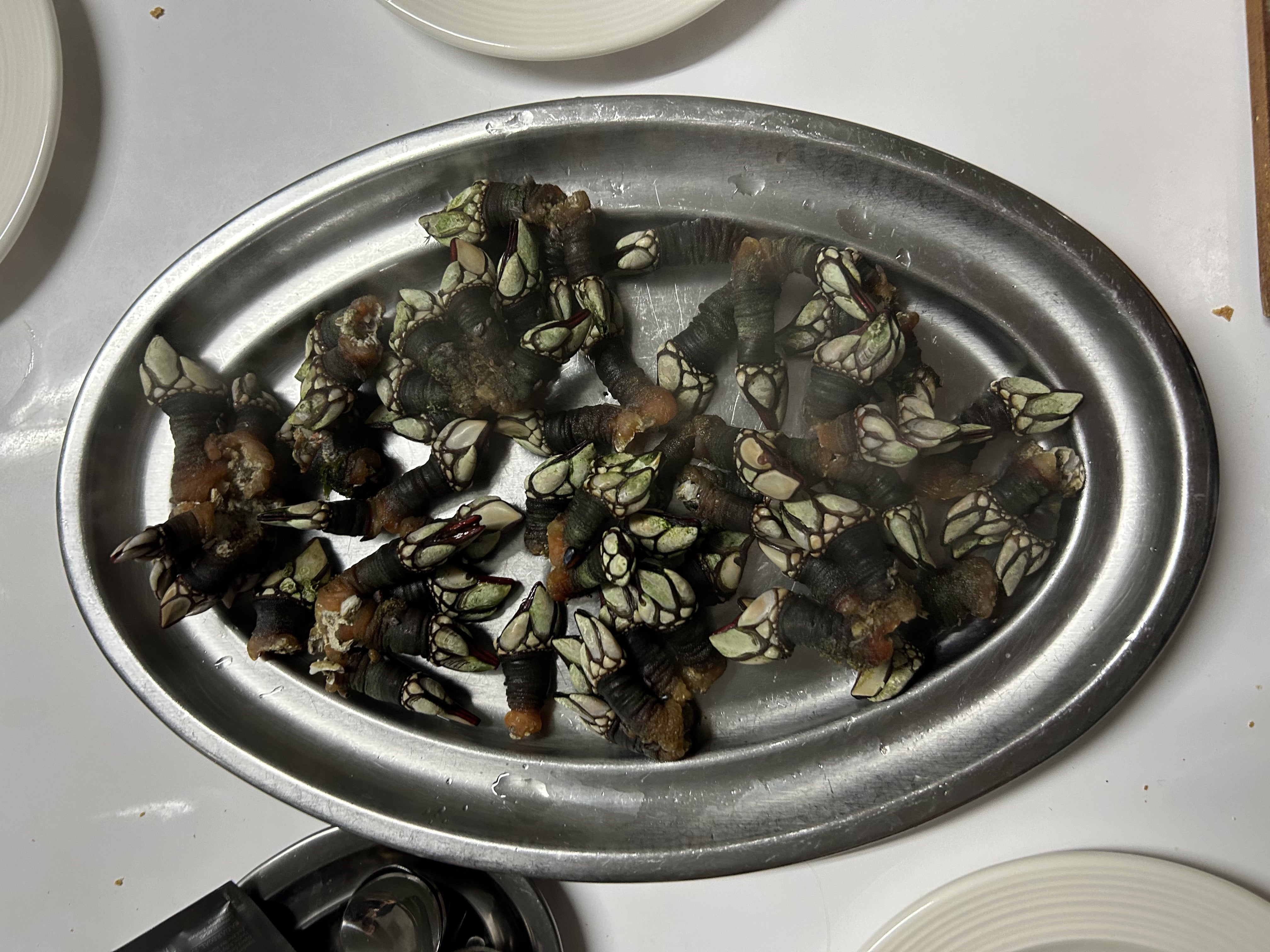
“Make sure the pointy bit is facing away from you, pinch the leathery stalk to tear it, then twist it and pull it off,” he quickly demonstrates. José bites the little bit of iridescent pinky meat that looks every so slightly gelatinous from the bottom piece he's still holding. After insisting on a few more demos in slower motion, we all follow suit. Once we get the hang of opening them, we’re rewarded with their gloriously sweet meat, which has a good dose of salinity, akin to the best bits of a langoustine or crab.
Read more: 11 of the best cities to visit in Spain
The city of Santiago de Compostela is affectionately known as the end point of the holy El Camino de Santiago (The Way of Saint James) pilgrimage and is full of wonderful medieval, Renaissance and Baroque architecture. But instead of walking, I'm on an eating pilgrimage as Galicia is famed for its superior quality shellfish, particularly octopus; empanadas (a pastry filled with meat or fish) and crunchy moreish Galician bread, a type of sourdough with a spongy texture and slightly acidic flavour. “It's deeply rooted in the land and sea – it’s simple, honest, and ingredient-led,” explains José. “It’s different from other regions in Spain as it’s so seafood-focused, but it still feels very homely and soulful.”
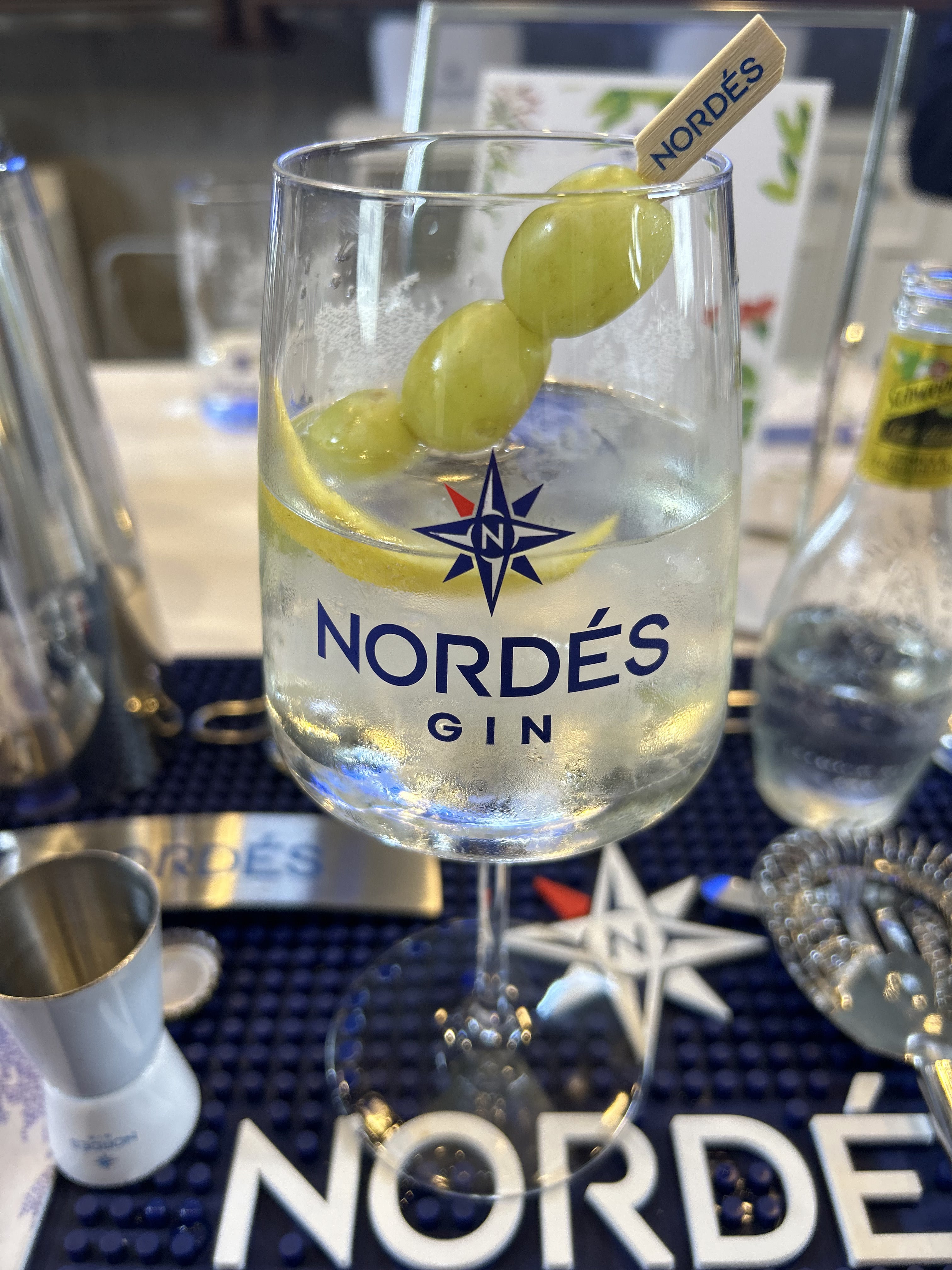
We begin our food pilgrimage here at Abastos 2.0 restaurant run by Iago Pazos, one of the many chefs José, unsurprisingly, knows. “You won't be able to stop eating the barnacles,” he warns, and he's right. Very quickly, we're all picking at them as if they were salted peanuts; it’s the saltiness that has us repeatedly returning for another morsel of sweet goodness. “They’re very expensive to buy in the market – about £90-100 per kilo,” he explains. “It's because they're so dangerous to harvest – people can sometimes die trying to get them.”
It's here that I have another first: a Nordesiño. This gin-based spritz using local gin, Nordés, is made of one part gin, two parts albariño wine and four parts tonic, and served with a bay leaf, a slice of lemon peel and garnished with a skewer of three grapes. It’s breezy and refreshing and we all agree it will be replacing Aperol spritzes this summer.
The gin’s key ingredient is pomace (leftover pulp and skins) of the native albariño grapes, which is used in its base spirit, creating a floral and aromatic gin. It was created by three friends who came up with the idea while eating pulpo (octopus), a very Galician dish. “They decided to make it a tribute to Galicia using the most important plants and botanics here,” explains our guide on our tour of Casa Nordés, just outside the city centre. “Six of the botanics are from Galicia including bay, lemon verbena, peppermint, eucalyptus, sage and samphire, and five are from overseas – hibiscus, black tea, cardamon, ginger and juniper.” José says it’s a great gin to go with seafood, “especially things like oysters, scallops, and lightly cured fish”.
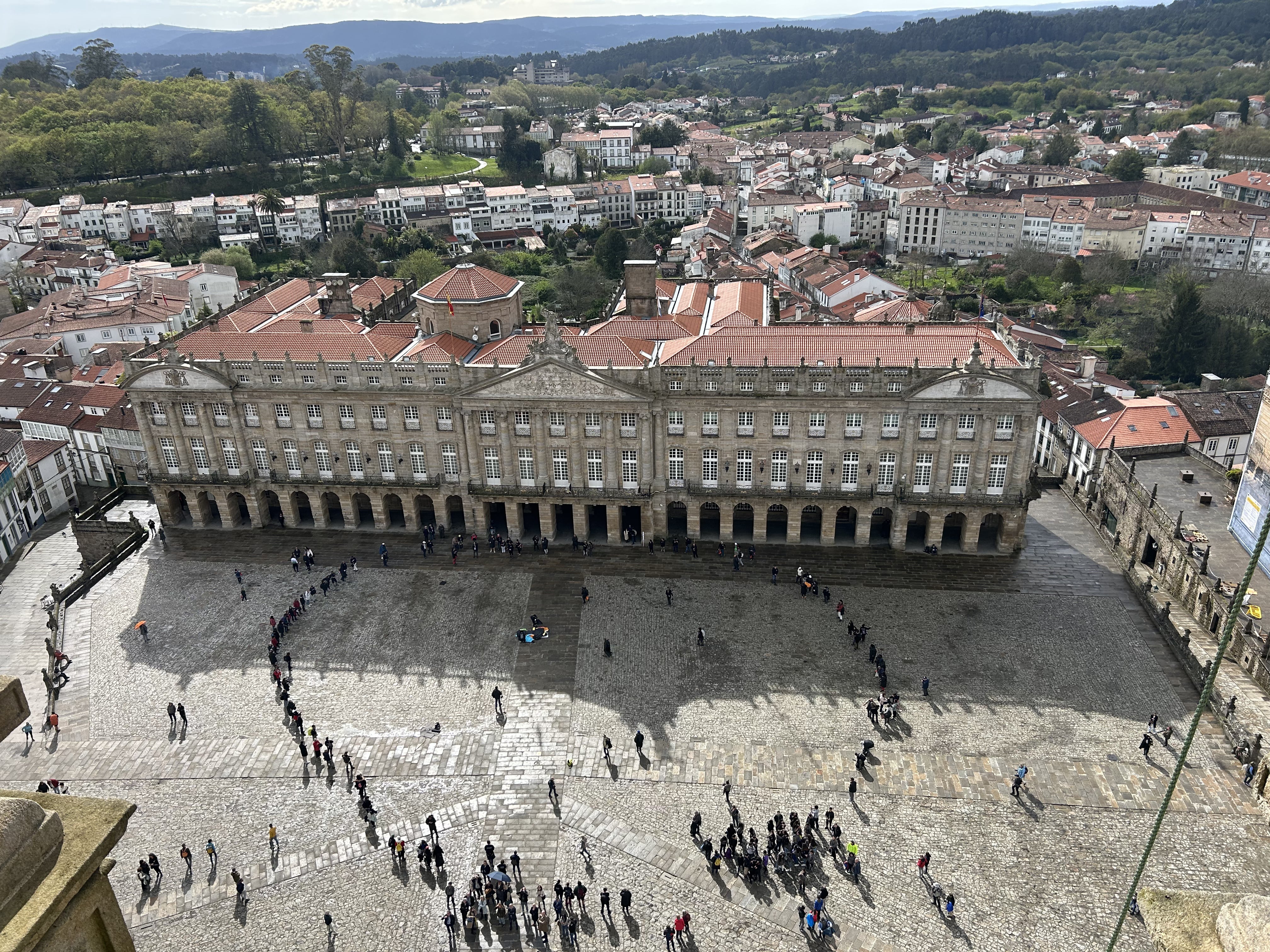
Food and drinks aside (for a moment), a trip to Santiago wouldn't be complete without visiting the Catedral de Santiago de Compostela. The vast and intricate golden altar is particularly impressive, but it’s the rooftop we head for. After climbing 140 steps, we walk across the cathedral’s roof, home to an easy-to-navigate staircase, and it feels like we’re living out a Mary Poppins fireworks scene fantasy. The tour is entirely in Spanish, but the incredible views over the red rooftops are wonderful and there’s no language barrier for that.
Read more: The crowd-free island getaway that won’t break the bank
From our lofty heights, we see the unusual sight of a hundred or so pilgrims who have joined hands in a huge circle singing joyously together in the Praza do Obradoiro square below. It’s a spectacle even Joaquín, our enthusiastic Galician guide, hasn't seen before and feels a privilege to witness.
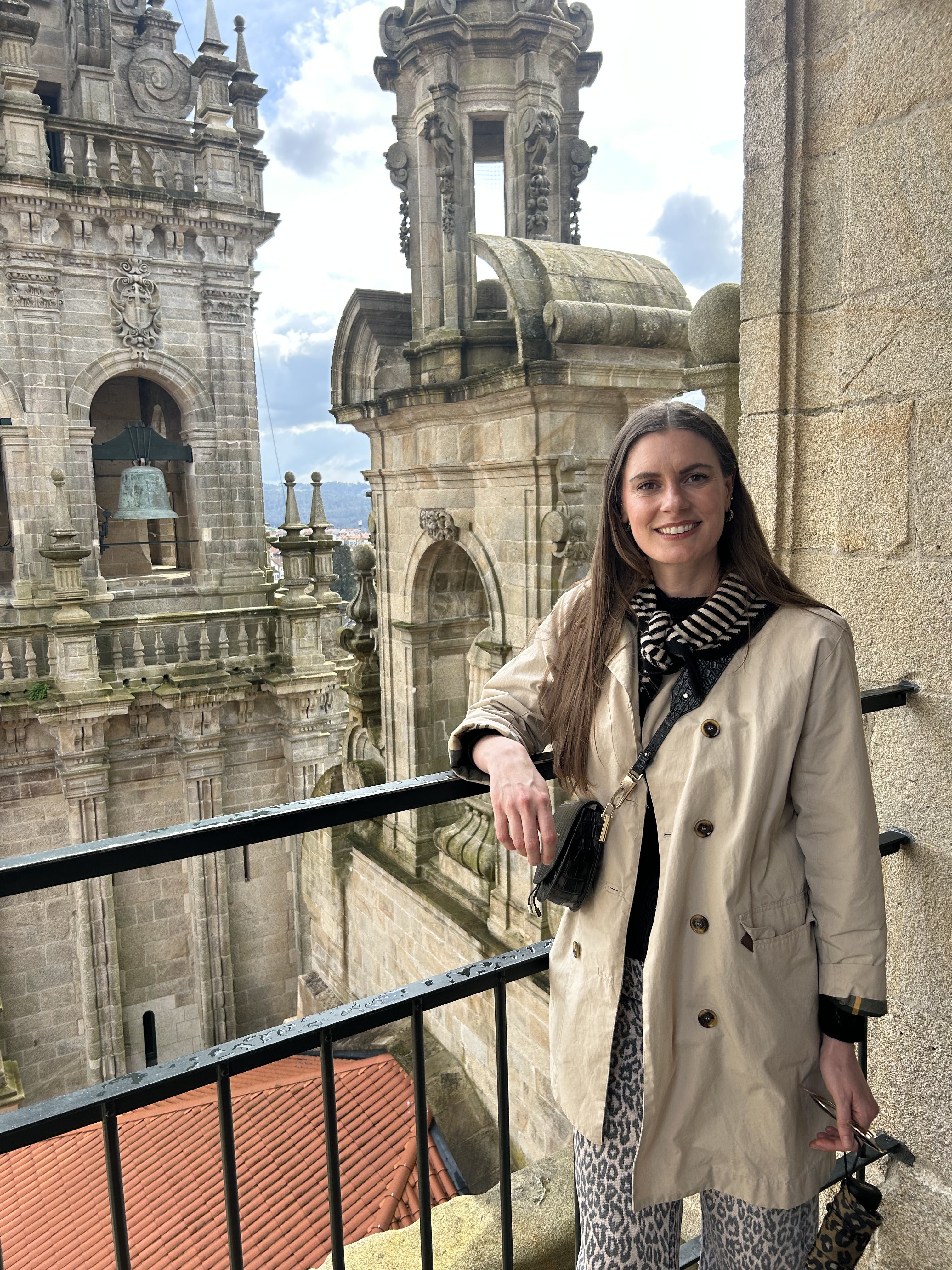
Afterwards, and back on the food trail, we head to O Gato Negro (The Black Cat), a small, relaxed tapas restaurant in The Old Town where José has managed to grab an outside table (it doesn't take bookings). He orders for us and out comes a huge centolla – a red king crab – for approval before cooking. When it arrives cooked, José shows off his chef skills and sloshes some of the godello white wine we're drinking into the shell to mix together with the meat, which we eat atop the crunchy Galician bread that’s constantly replenished on our table. He also orders more of our new favourite dish, goose barnacles, along with pulpo a la Gallega (octopus in oil doused in sweet paprika), cockles with oil and lemon, and empanadas. It’s nothing short of a seafood feast. “There's a real sense of purity and generosity in Galician cooking,” José explains. “It’s not overly complicated – it respects the product”, a fact that’s very clear from our dinner.
With the city’s cathedral ticked off, its next most-visited site is Mercado de Abastos, the food market. Considering the compact city is home to just 185,000 people, this huge market proves its other religion is most certainly food. But it’s not just a tourist attraction – it's a proper market used by chefs (where many of them choose to have their restaurants) and a place for locals to both eat and buy produce.
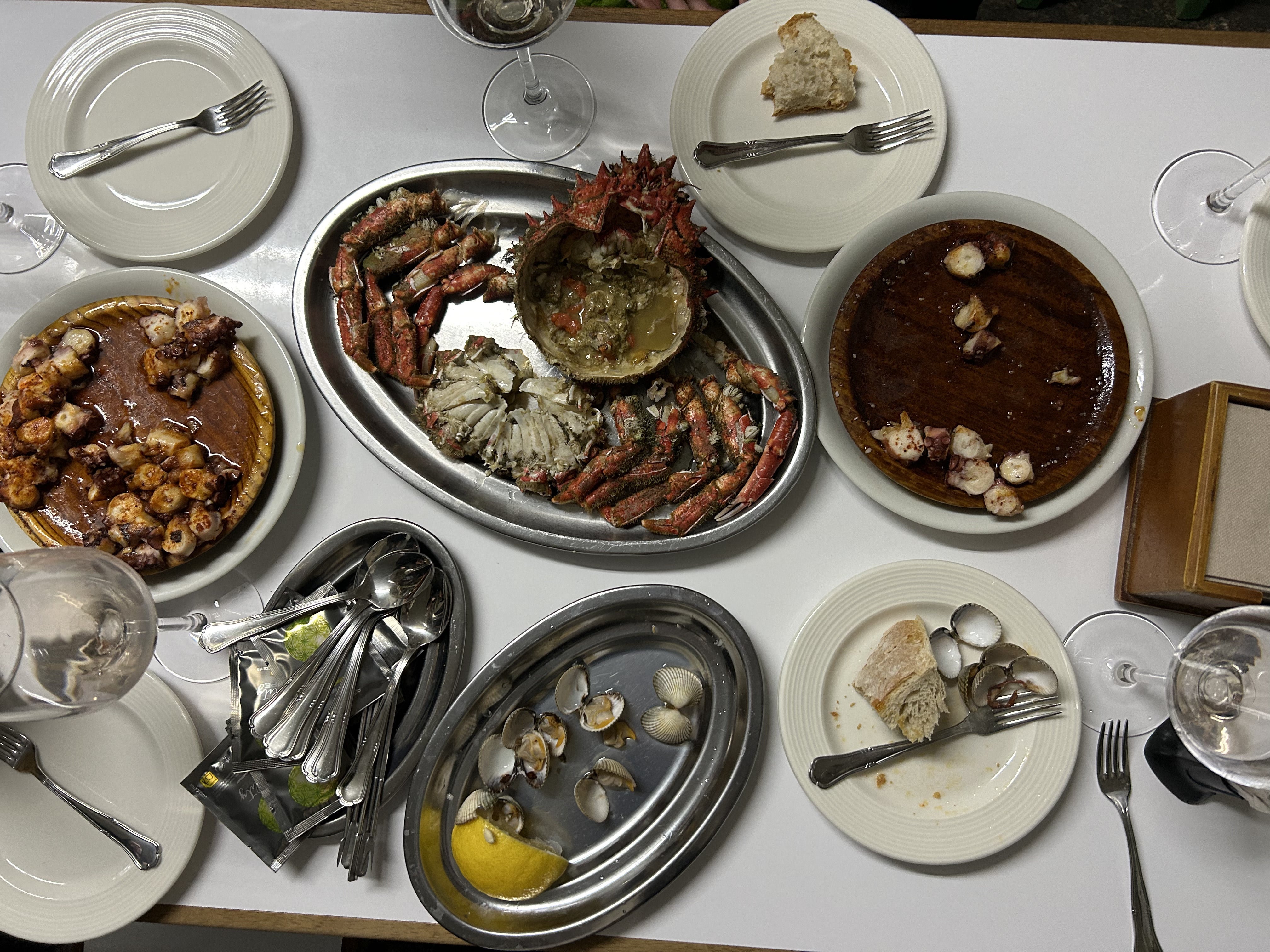
After a breakfast stop at A Cafe, another of José’s favourite hangouts, for yoghurt bowls and toasted sandwiches, we cross the road and head to the market. Inside, tall arched ceilings cover the eight corridors, selling everything from seafood to meats and cheeses, with counters adorning both sides and stall owners vying for attention. They’re bookended by stalls packed with brightly coloured fruit and vegetables that look impossibly shiny, with almost comically large peppers that are easily the size of my head.
Read more: San Sebastian city guide: Where to stay, eat, drink and shop
I feel like Charlie walking into Willy Wonka’s chocolate factory. Glass counters are packed with countless different cheeses and cured meats, or many types of prawns, including the famous gambas rojas (red prawns); oyster shells bigger than my hand, razor clams and gigantic brown crabs. Hanging above us are whole jamón legs and strings of salami, leaving just enough room for the seller’s face to be visible to sell their wares. Every inch of counter space is stacked with tins of Galician mussels in escabeche or more charcuterie flavoured with varying levels of spice.

In corridor five, it’s lunch to-go, Galician style, where you can take your market purchases and have them cooked for you. “From 1pm, it’s totally packed in here,” explains Joaquín. Friday and Saturdays are busiest, though the rain and chilly 10 degrees Celsius means we avoid the crowds.
José darts between counters and corridors with purpose. On his list is sobrasada, cheese and butter, essentials for visiting guests. “The butter’s the best in the world here,” he tells me and instantly I wish I could take some home. “I tried to buy three packs but they said they need to save it,” he says slightly forlornly. Before moving on, he spots some black pudding and adds it to the list. “I’ll have that for breakfast – it has pine nuts and raisins in it. I love it,” he gushes. He excitably asks the woman behind the deli counter to show me a cross-section of the black pudding. “It’s the first time I’ve seen it here,” he says. He beams after finding a huge veal chop for just €8 (£6.80). “It’s the quality of the produce that makes Galician food stand out: wild-caught seafood straight from the Atlantic, incredible beef from native Galician cattle, lush green vegetables and artisanal cheeses,” José says.
Unable to take much of the market’s fresh offering home with me, I resign myself to some travel-friendly options. A packet of ruby-red sliced jamón, tarta de Santiago – a deliciously dense and moist almond cake topped with an icing sugar stencilled cross (cleverly packaged in a plane-safe box) – and a tin of fancy Bonilla a La Vista Patatas Fritas crisps.
“This is life, isn’t it?” José says, clearly as pleased with his haul as I am with mine. Surrounded by some of the best fresh produce in this grand market, and after eating near my bodyweight in Galicia’s best seafood, I feel like I’ve come to the centre of my own food pilgrimage, connecting to the city, its people and producers through the love, admiration and respect it has for its food culture. I couldn’t agree more with him. Good food is life.
Where to eat in Santiago de Compostela
- A Cafe: For decadent yoghurt bowls, gourmet toasted breakfast sandwiches, sweet bakes and excellent coffee
- O Gato Negro : A relaxed tapas restaurant for superbly cooked octopus, empanadas, crab, cockles and goose barnacles, which doesn't take bookings
- Cafe Casino: A grand 19th-century traditional coffee house
- Anaco: Michelin-starred dinner with a tasting menu in the Old Town led by chef Víctor Lobejón
- Abastos 2.0: Michelin Bib Gourmand recommended small restaurant in the market
- A Horta Do Obradoiro: Go for decadent dishes such as black rice with monkfish
- Casa Nordés: Gin tours include a Nordesiño and a traditional Galician lunch in the founders' home
Read more: Barcelona city guide: Where to eat, drink, shop and stay in the Catalan capital
The best driving detours in France for 2025 road trips
10 best holiday destinations in July
Women on top: Meet the women running remote refuges in the wilds of the French Alps
The enchanting Spanish town that got tourism right
The Mediterranean escape with something for all the family
Best things to do in Costa Adeje, from hiking to whale watching







